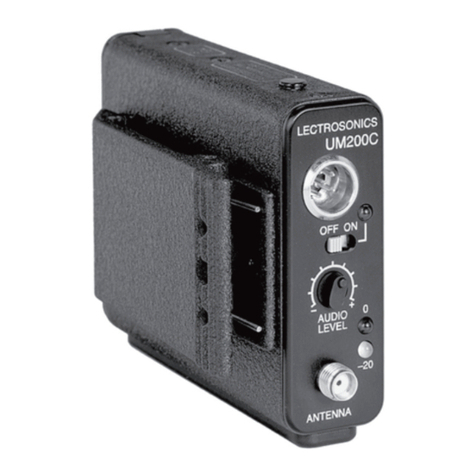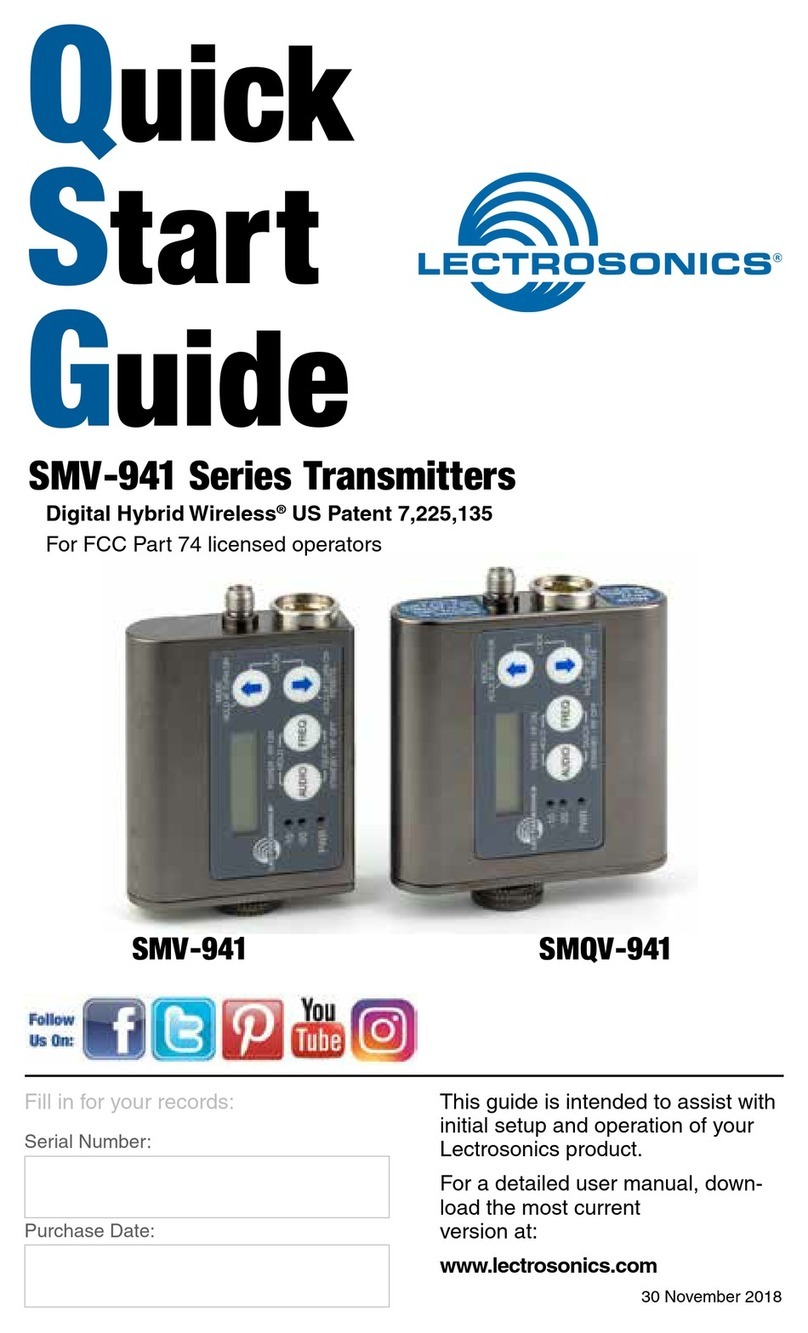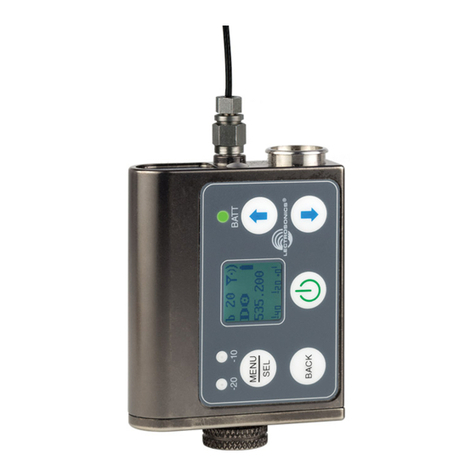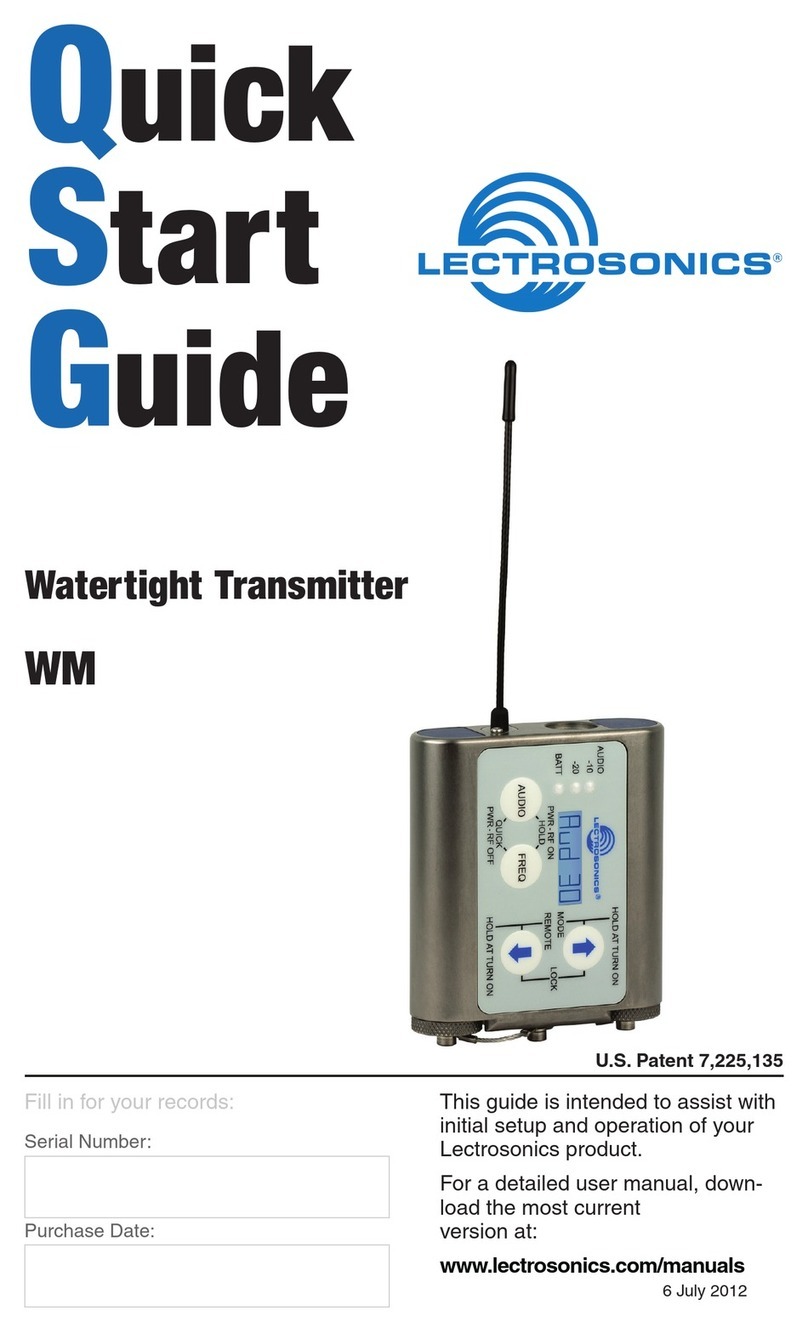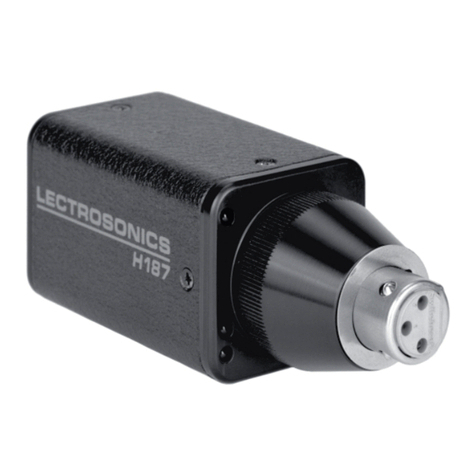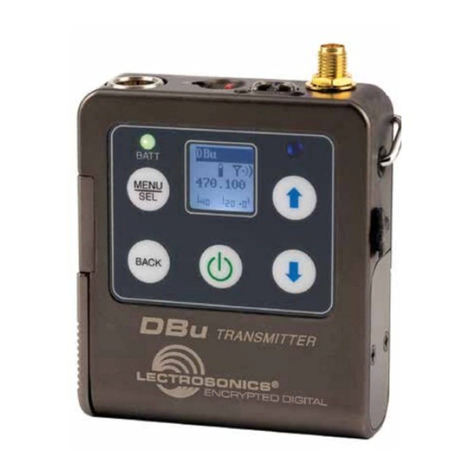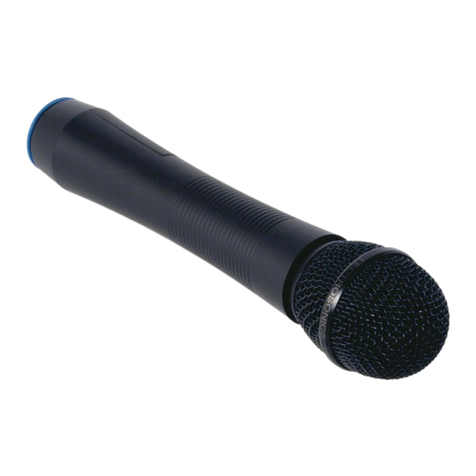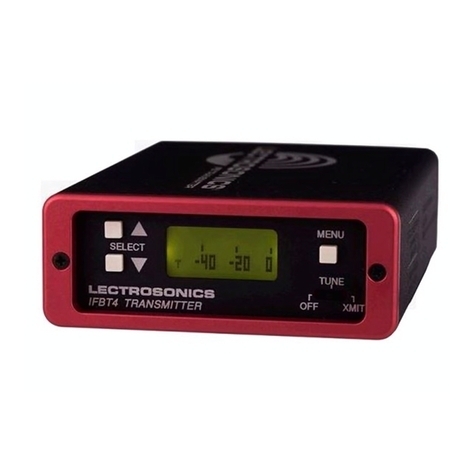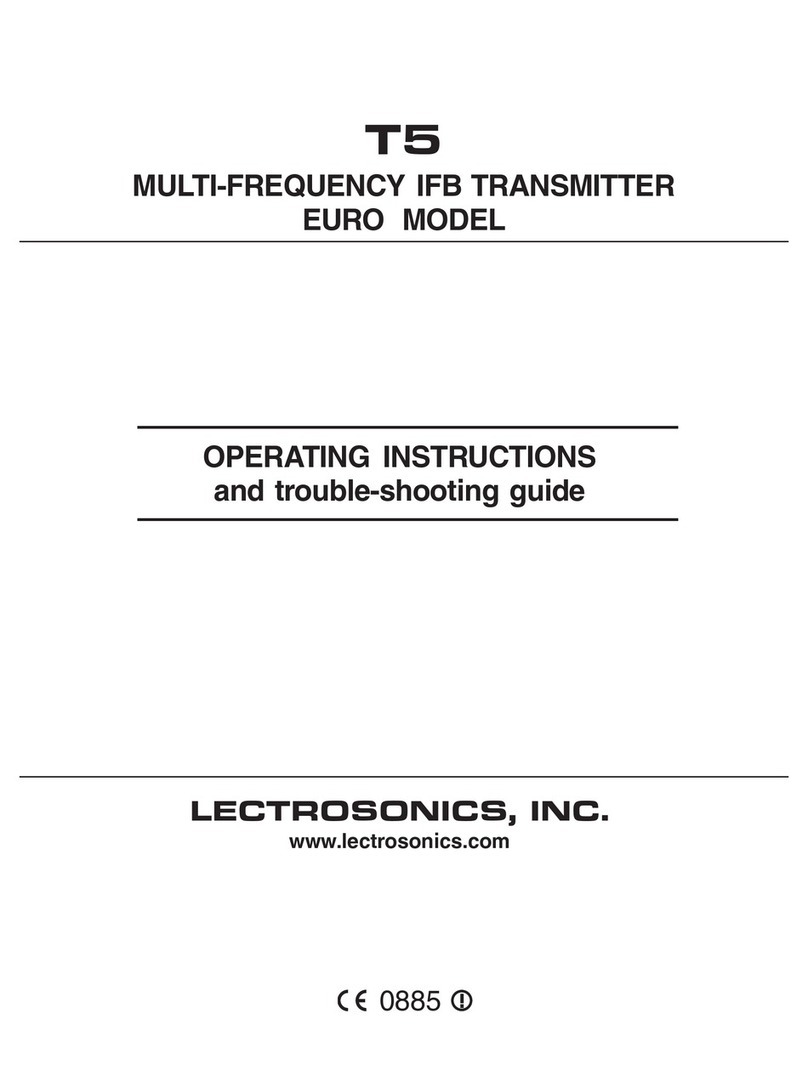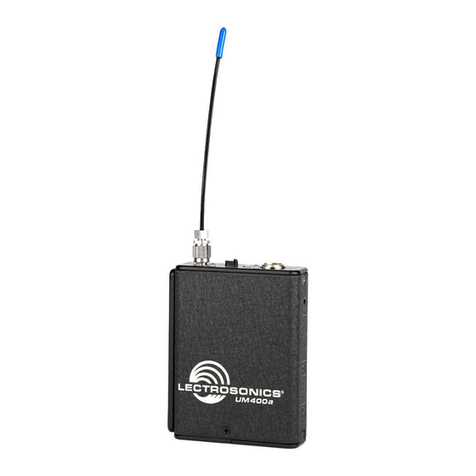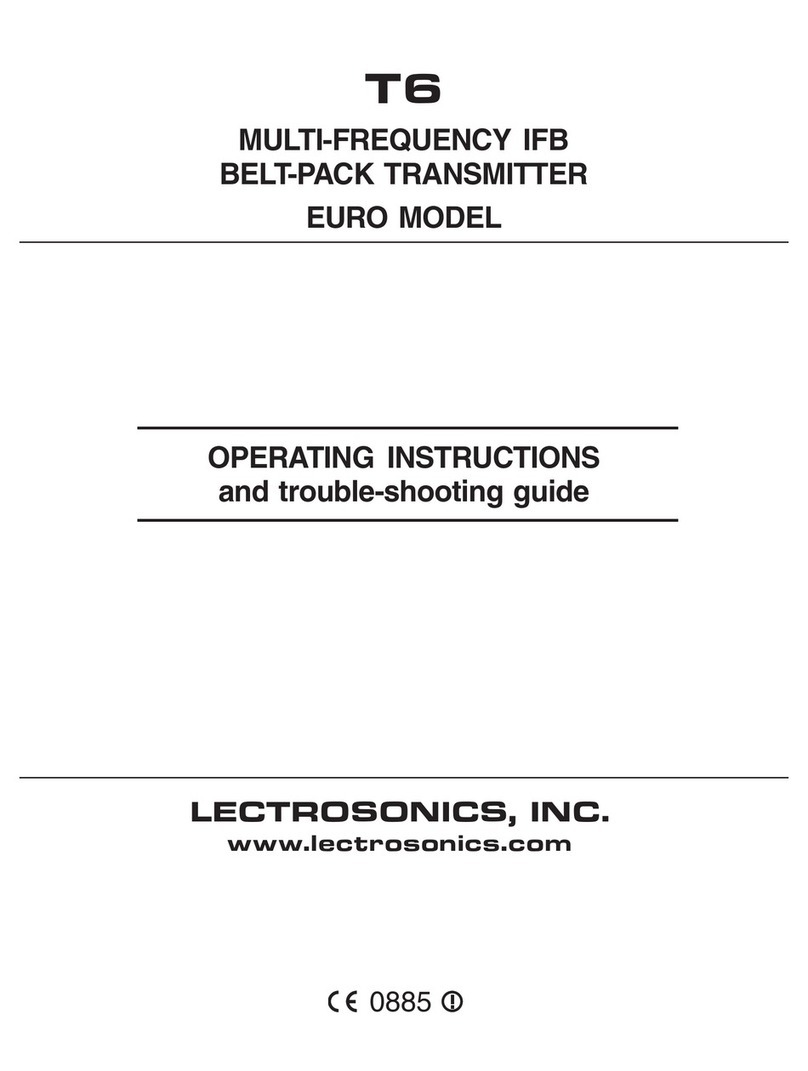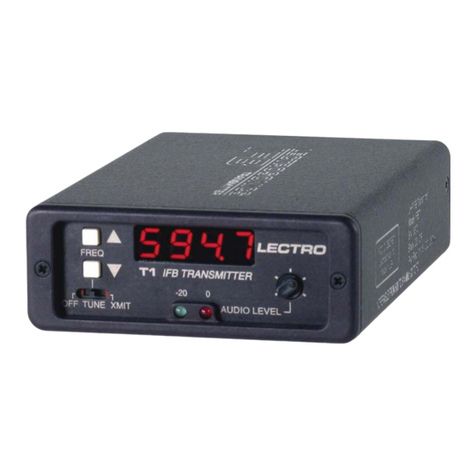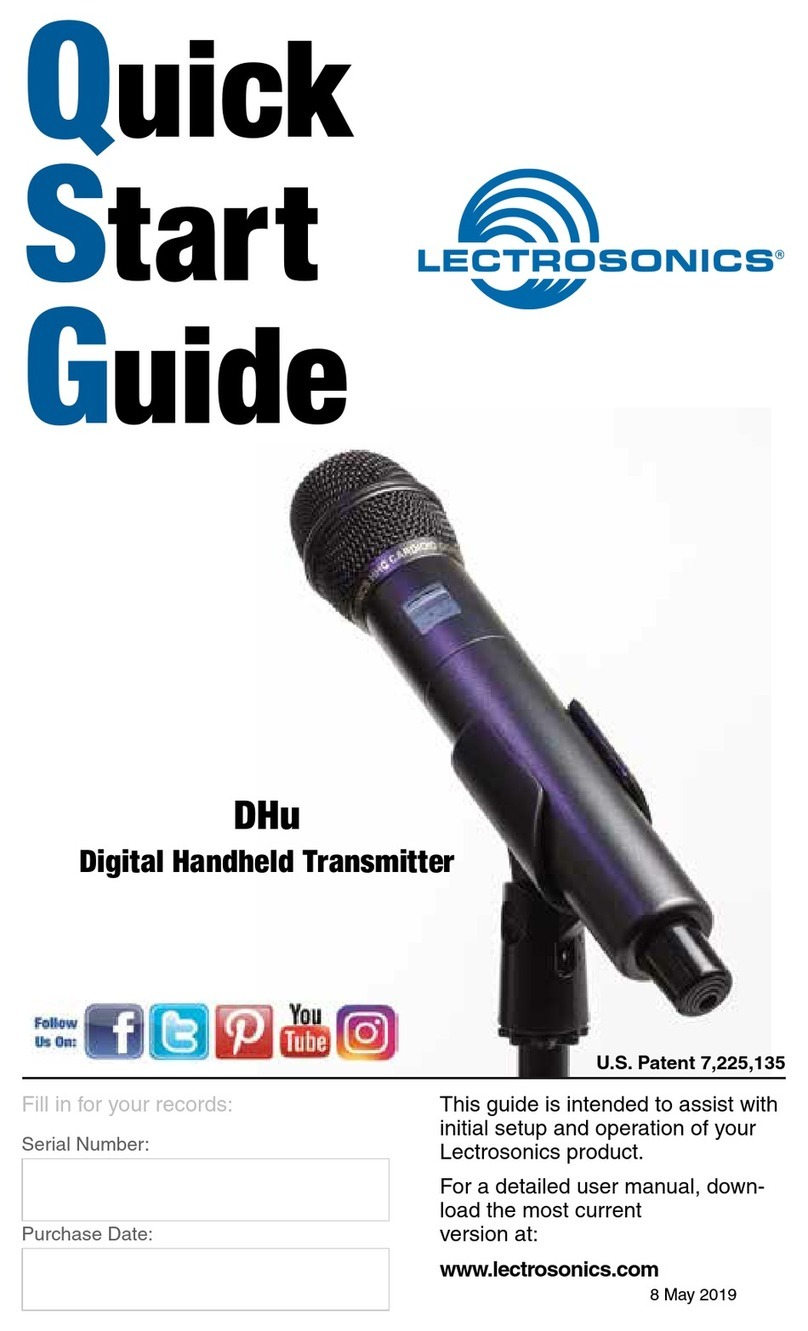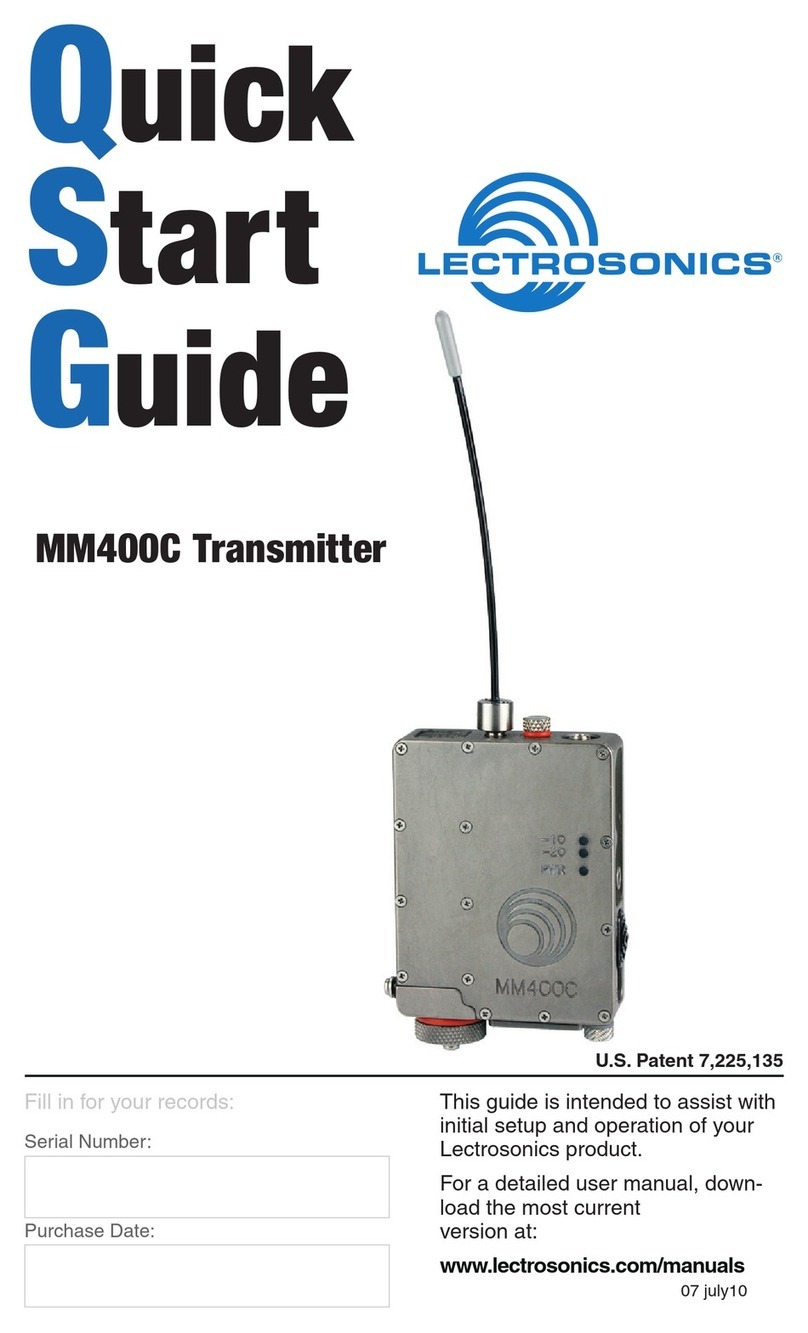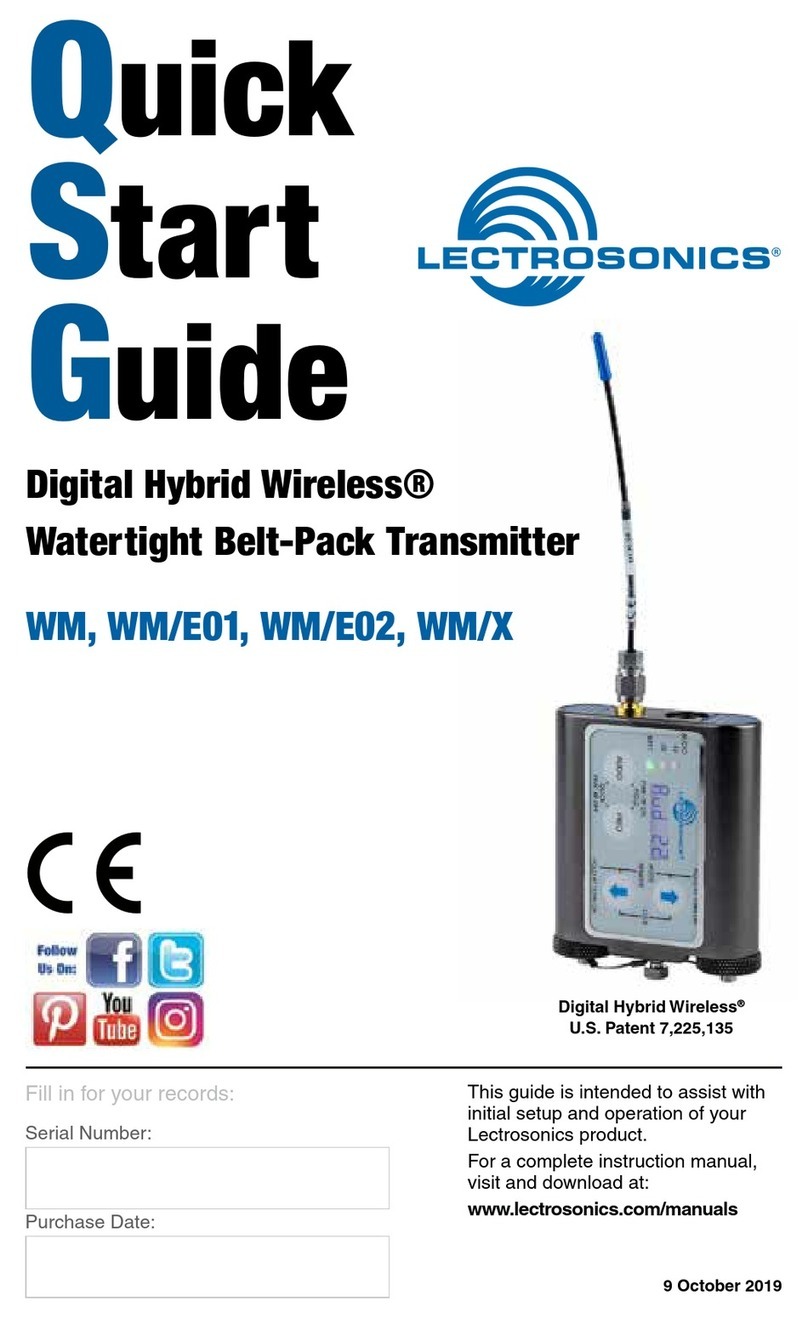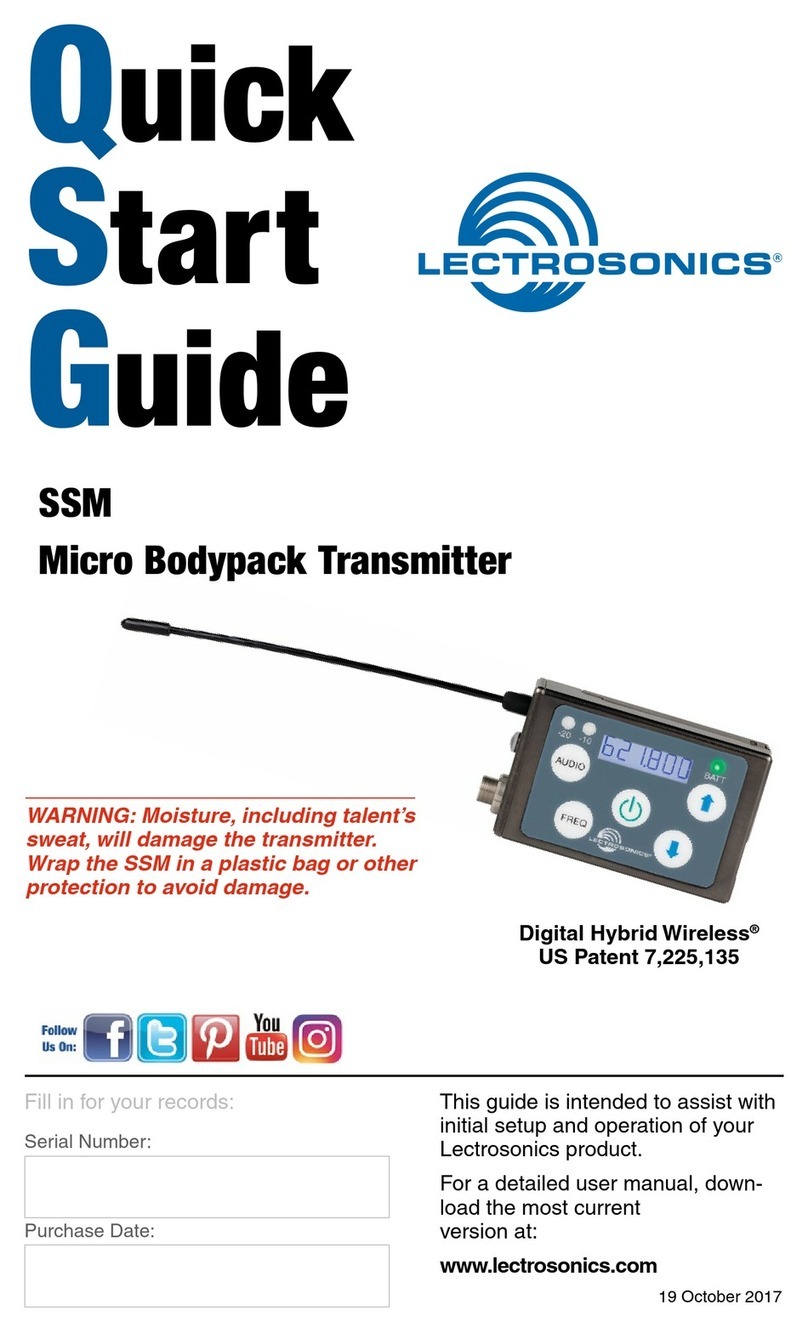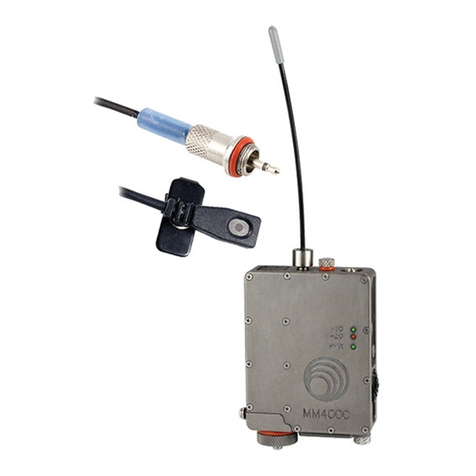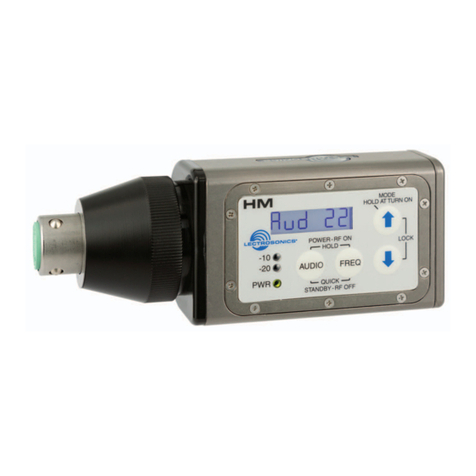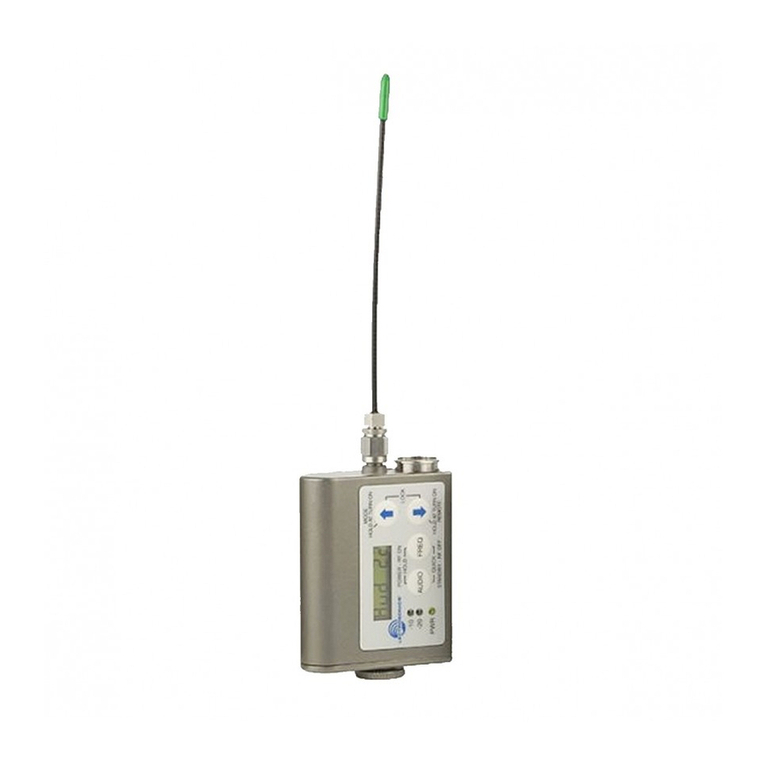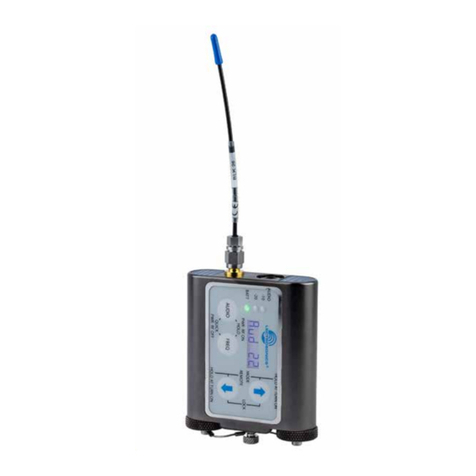
SSM, SSM-941, SSM/E01, SSM/E02, SSM/E06, SSM/X
LECTROSONICS, INC.
4
About Digital Hybrid Wireless
®
US Patent 7,225,135
All wireless links suer from channel noise to some
degree, and all wireless microphone systems seek to
minimize the impact of that noise on the desired sig-
nal. Conventional analog systems use compandors for
enhanced dynamic range, at the cost of subtle artifacts
(known as “pumping” and “breathing”). Wholly digital
systems defeat the noise by sending the audio informa-
tion in digital form, however, it is often at the cost of one
or more issues regarding power, bandwidth, operating
range and resistance to interference.
The Lectrosonics Digital Hybrid Wireless system over-
comes channel noise in a dramatically new way, digitally
encoding the audio in the transmitter and decoding it in
the receiver, yet still sending the encoded information
via an analog FM wireless link. This proprietary algorithm
is not a digital implementation of an analog compandor
but a technique which can be accomplished only in the
digital domain.
Since the RF link between transmitter and receiver is FM,
channel noise will increase gradually with increased op-
erating range and weakened signal conditions; however,
the Digital Hybrid Wireless system handles this situa-
tion elegantly with barely audible audio artifacts as the
receiver approaches its squelch threshold.
In contrast, a purely digital system tends to drop the
audio suddenly during brief dropouts and weak signal
conditions. The Digital Hybrid Wireless system simply
encodes the signal to use a noisy channel as eciently
and robustly as possible, yielding audio performance
that rivals that of purely digital systems, without the
power, noise and bandwidth problems inherent in digital
transmission. Because it uses an analog FM link, Digital
Hybrid Wireless enjoys all the benets of conventional
FM wireless systems, such as excellent range, ecient
use of RF spectrum, and long battery life.
Introduction
Three Block Tuning Range
The SSM transmitter tunes across a range of over 76
MHz. This tuning range covers three standard Lectroson-
ics frequency blocks.
BLOCK BLOCK BLOCK
Four tuning ranges are available covering standard
blocks as follows:
Range Blocks Covered Freq. MHz
A1 470, 19, 20 470.1 - 537.5
B1 21, 22, 23 537.6 - 614.3
B2 22, 23, 24 563.2 - 639.9
C1 24, 25, 26 614.4 - 691.1
C2 25, 26, 27 640.0 - 716.7
606* 606.0 - 631.5
*See Down Button Menu for more information
**Export Only (not available in US or Canada)
To simplify backward compatibility with earlier Digital Hy-
brid Wireless®equipment, block numbers are presented
along with frequencies in LCD screens.
About Frequency Blocks
A 25.6 MHz band of frequencies, referred to as a Block,
came about with the design of the rst frequency tunable
Lectrosonics wireless products. These products provided
two 16-position rotary switches to select frequencies
as shown in the illustration below. A logical method of
identifying the switch positions was using 16 character
hexadecimal numbering. This naming and numbering
convention is still used today.
The 16 switch positions are numbered 0(zero) through
F, presented in a two-character designation such as B8,
5C, AD, 74, etc. The rst character indicates the position
of the left hand switch and the second character indi-
cates the position of the right hand switch. This designa-
tor is commonly called a “hex code.”
FREQUENCY
1.6MHz 100kHz
012
3
4
5
6
7
8
9
A
B
C
D
EF
012
3
4
5
6
7
8
9
A
B
C
D
EF
On older transmitter models, the left hand switch
makes steps in 1.6 MHz increments, the right
hand switch in 100 kHz increments.
Each block spans a 25.6 MHz band. A simple formula is
used to name the blocks according to the lowest fre-
quency in each one. For example, the block starting at
512 MHz is named Block 20, since 25.6 times 20 equals
512.
